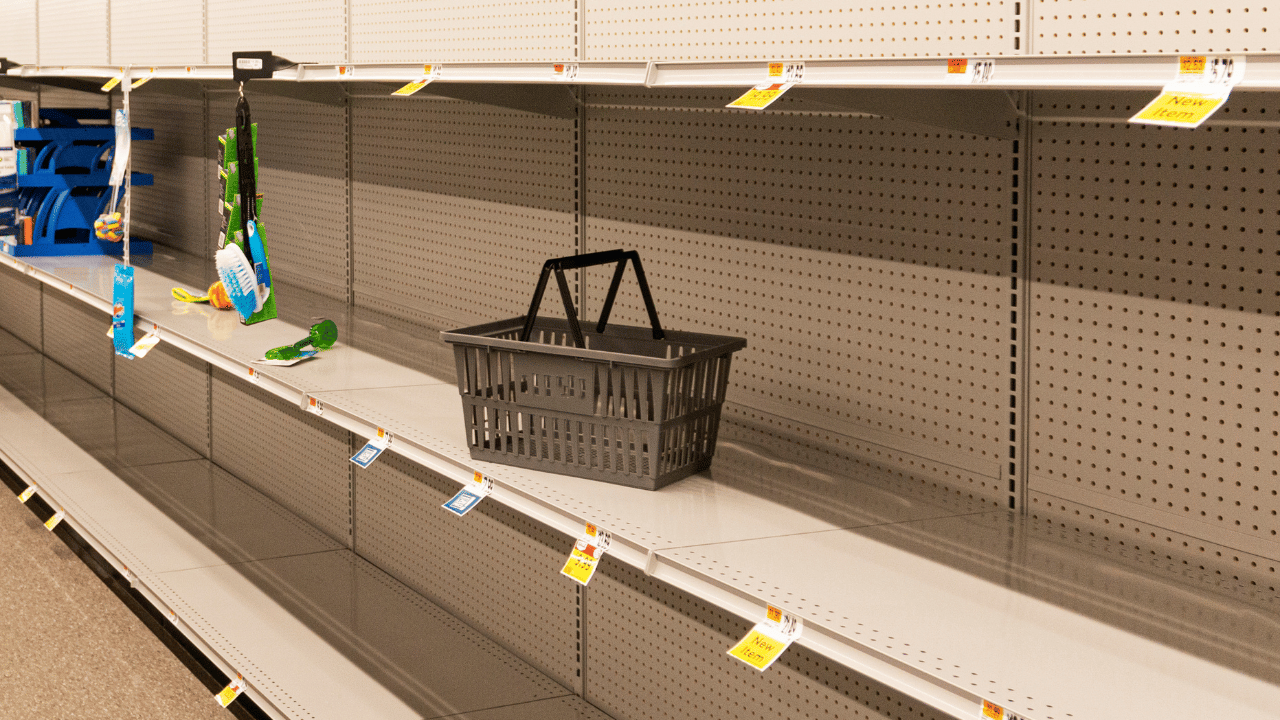Why Are Grocery Store Shelves Empty? Understanding the Causes

Have you ever walked into a grocery store and been shocked to find empty shelves where your favorite products used to be? This unsettling sight has become increasingly common, leaving many consumers frustrated and confused. The reasons behind these empty shelves are multifaceted, involving a mix of supply chain disruptions, unexpected demand spikes, and logistical challenges. Understanding these causes can shed light on why your local store seems to be perpetually out of stock.
Supply Chain Disruptions
Supply chain disruptions are a primary reason for empty grocery store shelves. Natural disasters, geopolitical tensions, and other unforeseen events can interfere with the smooth flow of goods, leading to significant delays. These disruptions cause interruptions in the supply chain, making it challenging for stores to replenish their stock promptly.
When supply chains are disrupted, it often results in shortages of essential products. This, in turn, leaves store shelves empty and consumers scrambling for available alternatives. Understanding these disruptions helps explain why certain items may be missing from grocery store aisles.
Increased Consumer Demand
Increased consumer demand can dramatically impact the availability of products in grocery stores. During times of uncertainty, such as a pandemic or economic crisis, people often buy more non-perishable items in bulk, overwhelming the supply chain. This surge in demand can deplete store inventories faster than they can be restocked.
The unexpected spike in demand can lead to noticeable shortages on store shelves. Consumers may find that their favorite products are frequently out of stock, creating a sense of frustration and urgency to purchase items before they run out.
Transportation Challenges
Transportation challenges play a crucial role in the availability of grocery store products. Issues like truck driver shortages, rising fuel prices, or logistical inefficiencies can delay product deliveries significantly. These transportation problems create a bottleneck in the supply chain, making it harder for stores to receive timely shipments.
When transportation systems face difficulties, stores may struggle to maintain adequate stock levels. The delays caused by transportation issues can result in empty shelves and limited product availability for consumers.
Manufacturing Delays
Manufacturing delays directly impact the availability of products on grocery store shelves. Equipment malfunctions, labor shortages, or supply shortages of raw materials can cause factories to slow down or halt production. These delays result in fewer products being produced and ultimately available for consumers.
When manufacturing processes are disrupted, the ripple effect is felt throughout the supply chain. Stores may experience shortages of various products, leading to empty shelves and diminished product choices for shoppers.
Labor Shortages
Labor shortages in key sectors can contribute significantly to empty grocery store shelves. Retail and logistics industries have faced increased challenges due to insufficient staffing, making it difficult to manage inventory and stock shelves effectively. This shortage of workers can disrupt the flow of goods and lead to empty aisles.
Without enough workers to handle stocking and inventory management, stores may struggle to keep their shelves full. Labor shortages, therefore, exacerbate the issue of product availability and contribute to the empty shelves many consumers encounter.
Global Trade Issues
Global trade issues can have a profound impact on the availability of products in grocery stores. Tariffs, trade restrictions, and international conflicts can disrupt the flow of goods between countries, leading to shortages of imported products. These disruptions affect the overall inventory levels in local stores.
When global trade is disrupted, the availability of essential items can become unpredictable. Consumers may notice a lack of certain products, particularly those that rely heavily on international supply chains.
Inventory Management Problems
Inefficient inventory management can lead to both overstock and stockouts, impacting grocery store shelves. If stores or suppliers fail to accurately predict demand or manage stock levels, they may end up with empty shelves. Poor inventory management practices create inconsistencies in product availability, leaving gaps on store shelves.
When inventory is not managed effectively, stores struggle to maintain a steady supply of products. These issues result in frequent shortages and empty shelves, frustrating consumers who rely on consistent product availability.
Seasonal Variations
Seasonal variations can catch stores off guard, leading to empty shelves. For instance, during peak seasons or holidays, certain products experience heightened demand, which can exceed store inventory. If stores do not anticipate these fluctuations, they may quickly run out of popular items.
The inability to manage seasonal demand effectively results in noticeable product shortages. Shoppers may find it challenging to purchase seasonal items when stores are unable to keep up with the increased demand.
Emergency Situations
Emergency situations, such as natural disasters or pandemics, can disrupt supply chains and lead to empty grocery store shelves. During these events, the demand for essential items often surges while the ability to restock may be hindered by transportation and supply challenges. This combination creates temporary shortages in stores.
The immediate impact of emergencies on supply chains can result in noticeable product shortages. Consumers may find that certain items are frequently out of stock during these challenging times.
Supplier Issues
Supplier issues can have a significant effect on grocery store inventories. Problems such as supplier bankruptcies, production problems, or quality control issues can disrupt the regular flow of goods to retailers. When suppliers face difficulties, stores may struggle to maintain a consistent stock of products.
Disruptions at the supplier level can lead to noticeable shortages on store shelves. Consumers may encounter empty aisles as a result of these issues, highlighting the interconnected nature of the supply chain.






